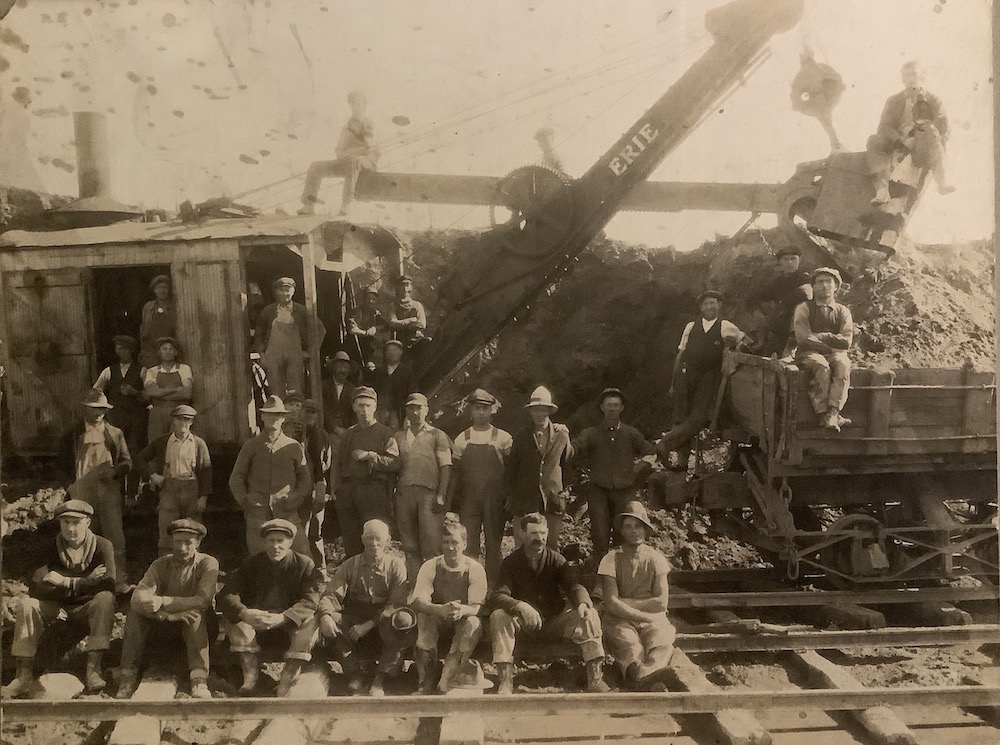The Erie Steam Shovel

Circa 1930s
Source: Beachville District Museum Reference Library
William Smith Otis (1813-1839) invented the “steam shovel” in 1836 in Philadelphia, Pennsylvania, a revolutionary invention for the aggregate industry. Before Otis’ invention, almost all excavation projects were completed with picks, shovels and wheelbarrows. The Otis shovel was wood-fired and had a single-scoop design. It went through many modifications during the 1840s. By the mid-nineteenth century, it was reported that steam shovels could excavate the same stone as 180 men armed with hand tools.
It is believed that these shovels only became common in quarries around 1905. With the Erie shovel (pictured here), the bottom of the scoop functioned like a trapdoor, which dropped open once it was full. Overburden would fall into carts or tram cars, removing the dirt and clearing the land to continue limestone extraction. North American Cyanamid, Gypsum Lime Company, Innerkip Lime, and Stone/Chemical Lime all relied on steam shovels.

